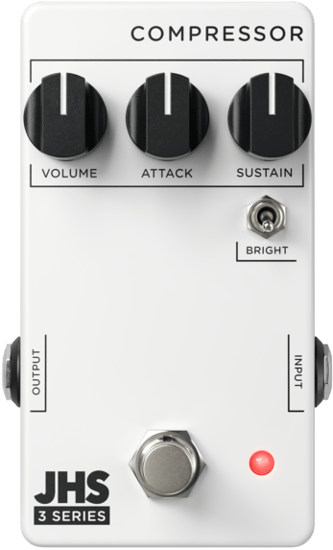JHS Pedals 3 Series Oil Can Delay Pedal Overview
After being discharged from the army in 1946, Ray and Marv Lubow formed Tel-Ray Electronics, specializing in Television and Radio repair. As the company grew, Ray also began dabbling in audio inventions – specifically, delay. Les Paul had already pioneered an effect called tape echo, but folks were trying to figure out how to make a smaller, more practical version of this oversized effect. Inspired to do just that, on June 30, 1959, Ray submitted the patent for an electro-static delay apparatus known today as the oil can delay.
These delay units contained oil in a tuna-can shaped drum that was moved by a belt mechanism that turned the drum while a special disk apparatus on which the audio signal “charge” was written and read through rubber wiper “heads.” The playback speed was directly related to the drum’s rotation speed. The oil acted as a protective layer to keep the audio signal “charge” electrons in place, creating a truly unique echo effect with elements of vibrato and slapback delay. Ray Lubow began licensing the oil can delay technology to amplifier companies, including Fender, Gibson, and Rickenbacker. In the late 1960s, Ray and Marv decided they wanted to start selling their devices under their own brand name and launched the now legendary effects company, Morley. Ray chose the name as a none-to-subtle jab at their competitor Leslie: “Why settle for less with a Leslie when you can get more with Morley?” Morley manufactured oil can delays up until 1989.
- MIX - Controls the mix of echo and clean signal. Left is less, right is more.
- SPEED - Controls the length of the delay time from 100ms to 330ms. Left is shorter, right is longer.
- FEEDBACK - Controls the amount of feedback or repeats of the delay signal. Left is less, right is more.
- +/- - The toggle allows you to switch between modulation intensities. In the down position, you have light movement, and in the up position, you have heavier movement. The modulation speed is associated with the delay time control (shorter is faster and longer is slower, reminiscent of the oil can warble in relation to the delay speed).
- INPUT - 1/4” jack on the right side of the pedal.
- OUTPUT - 1/4” jack on the left side of the pedal.
- THIS PEDAL REQUIRES STANDARD 9VDC NEGATIVE POWER, CONSUMES 65m, AND MEASURES 4.42” X 2.38” X 1.22”





























